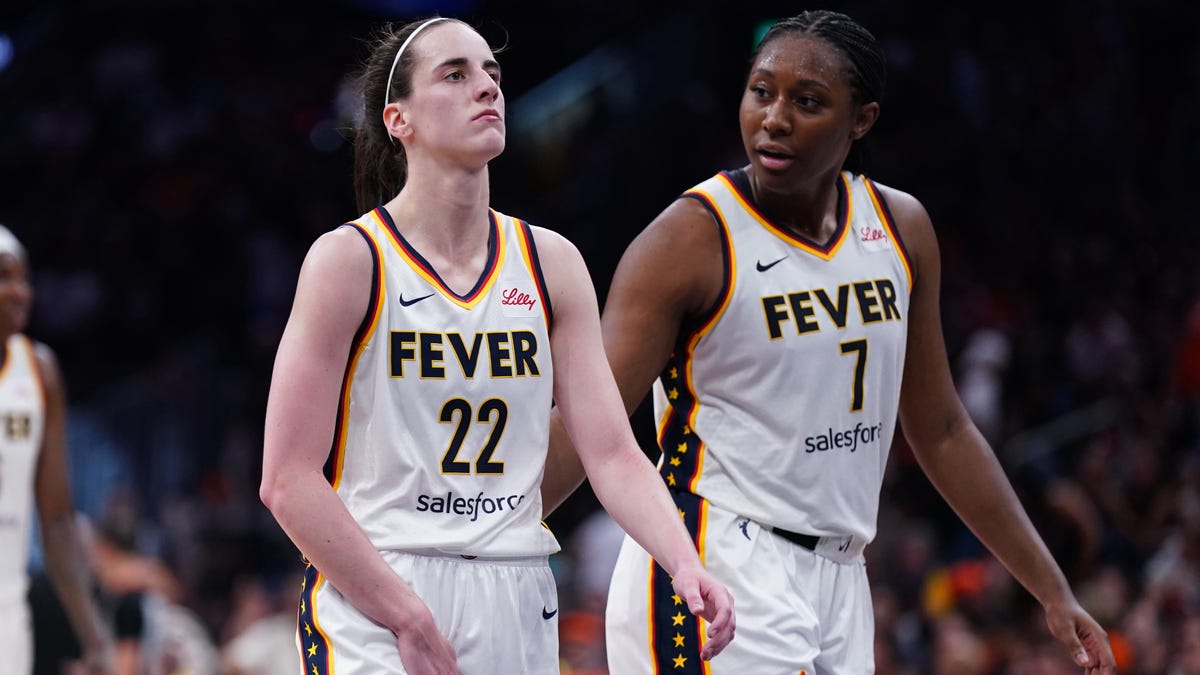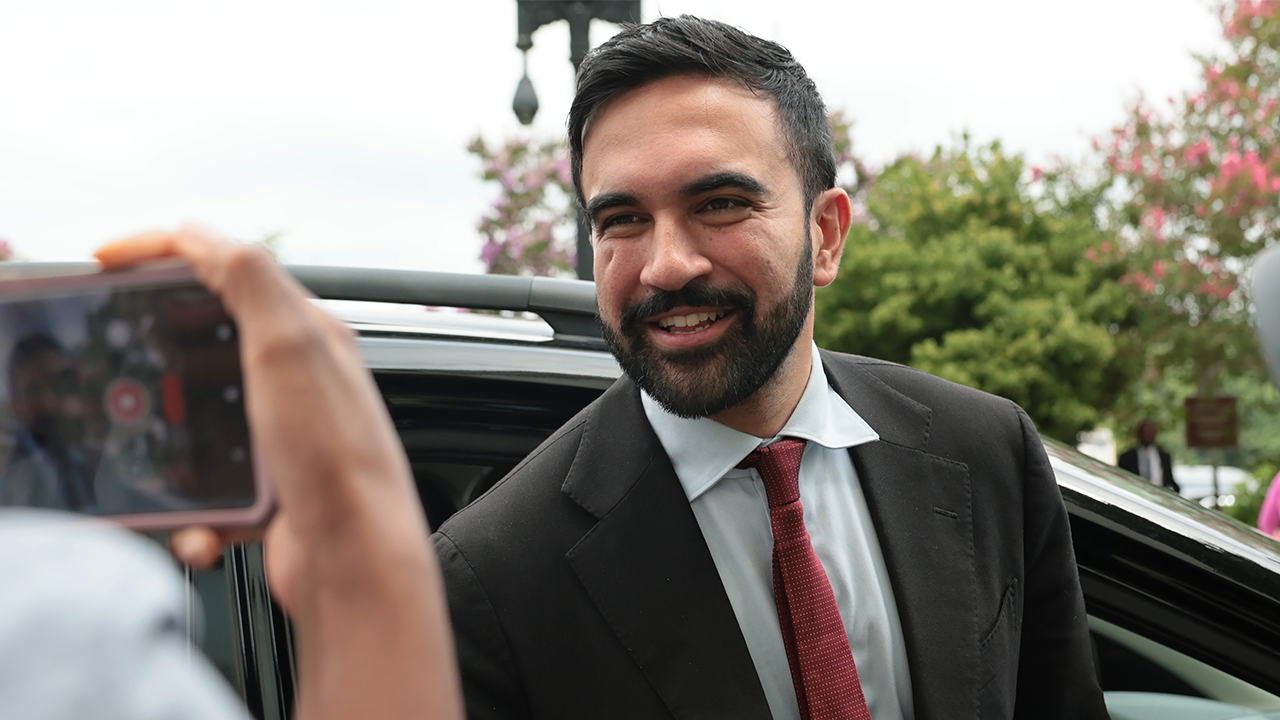Indiana
How Columbus, Indiana, became a mecca for modern architecture

COLUMBUS, Indiana – Ordinary Indiana? Not this town, which became a mecca of modern architecture in the second half of the 20th century.
The story of how it happened is almost as interesting as the architecture itself.
J. Irwin Miller, a Columbus native and the chairman of Cummins Engine Co., wasn’t a fan of bland post-World War II buildings. So he challenged his hometown to do better.
To encourage the use of some of the world’s best-known architects, his company established a fund that covered the design fees for dozens of public projects.
The idea worked. Columbus, population about 50,600, is home to dozens of striking and imaginative buildings, designed by a who’s-who of 20th and 21st century architects.
Among the big-name designers: I.M. Pei, Harry Weese, Eero Saarinen and numerous others.
The American Institute of Architects in 2012 listed Columbus sixth in its ranking of most architecturally important cities in the U.S. – behind Chicago, New York, Boston, San Francisco and Washington, D.C. First Lady Lady Bird Johnson, after a visit in the late 1960s, dubbed Columbus “the Athens of the prairie.”
Miller’s initiative also made Columbus, about 90 miles west of Cincinnati, a tourist draw, a top destination for art and architecture students, as well as anyone who appreciates good design.
Informal Saturday morning architecture tours were offered starting in the 1970s, according to Erin Hawkins, director of marketing for the Columbus Area Visitors Center. Today, they’re offered five days a week and regularly sell out.
Separately, visitors can tour the Miller House, the 1953-era home designed by Eero Saarinen for Irwin and Xenia Miller, and their five children. It’s considered among the very finest examples of mid-century modern architecture in the country.
View of First Christian Church, as seen through Henry Moore’s Large Arch in Columbus, Indiana.

Interior of Bartholomew County Library, designed by I.M. Pei; that’s First Christian Church framed by the window.

Columbus City Hall, designed by Edward Charles Bassett in 1981.
Touring the town
The Architecture Highlights Tour starts downtown, across the street from the visitors center at the First Christian Church, built in 1942, the city’s first foray into modern architecture. Miller, a member of the church, helped convince his fellow parishioners to hire Eliel Saarinen — father of Eero – who defied contemporary expectations of what a religious building should look like with this creation.
Made of steel, brick and concrete, the church is simple but stunning, a study in geometric shapes, with a soaring 166-foot bell tower. (Alas, the tower was largely behind scaffolding during my visit.)
This is one of a handful of buildings on the tour that visitors can experience from the inside. The sanctuary, spare but elegant, features high, vertical windows, no stained glass to be seen, and a cross that is off-center.
“Everything is off-center except for the communion table,” said tour guide Sally Madge. “It’s the idea that nobody’s perfect – we’re all human.”
The church set the stage for what was to come later, throughout the community.
In the late 1950s, Eero Saarinen – perhaps best known for designing the Gateway Arch in St. Louis and Dulles International Airport outside Washington, D.C. – was commissioned to design another church.
North Christian Church, with its hexagon shape and 192-foot-high spire, became the symbol of modernist Columbus, featured on brochures and other materials promoting the city.
Unfortunately, the church closed last year, due to falling membership, so we could only admire the structure from the outside.
It was Saarinen’s favorite design, according to Madge, completed in 1964, three years his death.
The only problem with its circular design, according to Madge: “If you were late for church, everybody knew it.”
Community leaders are in discussions to keep the building in use. A library branch is one possibility, according to Hawkins.
Also on the tour:
* The Bartholomew County Library, designed by I.M Pei in 1969, is one of the famous architect’s earliest designs. (He designed Cleveland’s Rock and Roll Hall of Fame in 1995.) Pei conceived of the library as a community gathering place, with a large outdoor plaza out front. Miller commissioned British artist Henry Moore’s now-iconic Large Arch for the space. This is another building tourgoers can see from the inside, including Pei’s intricate coffered ceiling.
* Schmitt Elementary, the first design funded by the Cummins Foundation, was designed by Harry Weese in 1957. The school features classrooms separated to look like small residences. “He wanted the kids to feel comfortable,” said Madge. “He wanted them to look like little houses for the kids.”
* And the Irwin Conference Center, formerly the Irwin Union Bank, also designed by Eero Saarinen, in 1954. It features white domes on top, which led to its nickname as the bra factory, said Madge.
“I was a little kid when this was built,” she said. “I remember walking into that one and wanting to do cartwheels in it. It was so gorgeous inside.”
Not all buildings were so well received, however.
“In the 1960s, this was a pretty conservative community,” she said. “Some of these buildings were difficult for some to understand.”
Some people in the community complained that one of the modern school buildings looked too much like a prison, according to Madge.
And speaking of prisons – others said the county jail, designed in 1990 by Don Hisaka, was much too beautiful.

The Miller House, designed by Eero Saarinen for Irwin and Xenia Miller.

Conversation pit at the Miller House in Columbus, Indiana.
Touring the Miller House
Not long after he finished the bank, Saarinen was back in town, working on a more personal commission: a house for Miller, his wife Xenia and their five children.
The Miller House, located about a mile and a half north of downtown, is accessed via a separate tour, also offered by the Columbus Area Visitors Center.
The house, nearly 6,800 square feet on 13.5 acres, is a wonder of modern design, simple but elegant, with floor-to-ceiling windows, white marble walls and bold colors.
The living room – with its four-sided couch and sunken conversation pit – is the showstopper.
“The kids used to run from the dining room and launch into the conversation pit,” said guide Bob Bolner, a retired Cummins engineer. “I call it a house. It’s really a home. They raised five children here.”
Bolner also pointed out teeth marks on the Steinway piano – perhaps made by an unenthusiastic young musician.
“The children had a lot of fun here,” noted Bolner.
But there was plenty for the adults to like, too, including a handmade rug with panels recounting periods of family history; Xenia Miller’s extra-large dressing room; and the large kitchen with three ovens, two sinks and a built-in refrigerator.
The garden, designed by landscape architect Dan Kiley, extends the living space outside, with a rectangular lawn, walls of arborvitae and trees planted in perfect lines.
Bolner called the property “the perfect example of mid-century modern architecture.”
Miller passed away in 2008 and his wife died a year later. The house, donated to Newfields in Indianapolis, was opened for tours in 2010.
The house adds to Miller’s legacy, which is omnipresent throughout town. “He really did feel architecture helped shape a community, who lived here and how they felt about a place,” said Madge.
The city, meanwhile, continues to add to its collection of modern buildings, even as modern architecture has become more mainstream.
Ivy Tech Community College most recently used funding from the Cummins Foundation Architecture Program to help pay the design fees for its new Columbus campus building, designed by IwamotoScott Architecture of San Francisco. It opened last summer.

Bartholomew County Jail in Columbus, Indiana.

Bartholomew County Courthouse, circa 1874, with the Bartholomew County Memorial for Veterans added in 1997.

Interior of First Christian Church, designed by Eliel Saarinen in 1942.

Former Irwin Union Bank — now a coffee shop — designed by Harry Weese in 1961.
Columbus, Indiana: If you go
Where: Columbus is about a five-hour drive from Cleveland, 90 miles west of Cincinnati.
Tours: Columbus Area Visitors Center offers several guided public tours, including its popular Architectural Highlights Tour, which runs Tuesday through Saturday. Price is $30 for adults, $25 for students. Miller House and Garden Tours are also offered Tuesday through Saturday, also for $30. Other tours: Iconic Columbus Walking Tour and Inn at Irwin Gardens Tour. For a schedule and reservations: columbus.in.us/tour-options
Staying overnight: The Inn at Irwin Gardens, located downtown, features five overnight rooms in a spectacular setting; room rates start at $220. Information: irwingardens.com
Where to eat: Upland Columbus Pump House, in an historic building overlooking the Flatrock River, with beer, burgers and more; and don’t miss Zaharakos, an old-fashioned ice cream parlor that dates back to 1900.
Information: columbus.in.us
Read more:
What’s new (and old) in Indianapolis: Bottleworks Hotel, Newfields, Kurt Vonnegut and more
With inspiration from Indianapolis, Destination Cleveland plans major downtown lighting installation

Interior of North Christian Church, which closed last year.

View of First Christian Church and the Large Arch from the library plaza in downtown Columbus, Indiana.

Indiana
Dead body found during police raid on fake sports memorabilia in Indiana | cllct

Police in Westfield, Indiana, said they discovered an “individual deceased with a self-inflicted gunshot wound” while executing a search warrant in regards to a counterfeit sports memorabilia scheme Wednesday.
The Westfield Police Department confirmed an “active investigation” into a fake memorabilia operation to cllct and said they executed a search warrant in the 16800 block of South Park Drive on Tuesday.
That investigation extended to the 300 block of Hoover Street, where upon arrival, officers found the dead body Wednesday. Westfield is located about 20 miles north of Indianapolis in Hamilton County.
The FBI is involved in the investigation, which is ongoing, police said in a statement.
Indiana
Indiana Fever coach Stephanie White with the latest on Caitlin Clark’s injury

Stephanie White addresses fresh Caitlin Clark injury concern
The Fever star guard left Tuesday’s win over Connecticut in the final minute.
- Caitlin Clark injured her right groin, her fourth muscle injury of the season
- Caitlin Clark missed her 11th game of the season on Wednesday
NEW YORK — Caitlin Clark will miss her 11th game of the season on Wednesday night, continuing a frustrating season for the Indiana Fever star.
Clark suffered a right groin injury, her fourth separate muscle injury of the season, on Tuesday night against Connecticut in Boston. She grabbed at her groin area with about 30 seconds left in the game, then was visibly emotional as she left the game, putting a towel over her head.
“The most important thing for me was just making sure that she was okay,” coach Stephanie White said. “You know, anybody who’s been injured, as most of us have right now, being injured and continuing to have setbacks is frustrating, mentally, emotionally, and oftentimes, being injured is isolating. So you know, from my standpoint, the primary conversations that we’ve had last night and today are just checking in. ‘Are you good? How can we help?’”
Clark was originally listed as questionable in the 1 p.m. injury report, then downgraded to out around 5 p.m. White said the downgrade was in response to imaging Clark was able to get on her groin on Wednesday afternoon in New York.
Re-live Caitlin Clark’s rookie season with our book
Still, White is optimistic about Clark’s health, considering her day-to-day.
“I consider it good news, just because, for me, if it’s anything that we’re talking about day-to-day, it’s always good news for me,” White said.
This is the first season Clark has had trouble with injuries, going her entire college career and rookie season without missing a game. She had left quad tightness that kept her out of the preseason opener, then suffered a quad strain in May that kept her out five games. Soon after returning from the quad strain, she had a left groin injury that kept her out another five. Now, she has a right groin injury.
While Clark hasn’t necessarily re-aggravated any of her injuries this season, being injured in the first place can lead to other, similar injuries because of overcompensation on muscles to make up for the injured one.
“I’m not really sure that it’s a re-injury as much as a different kind of injury,” White said. “I know oftentimes, when you’re working with injuries in the groin and the quad and the hamstring and all of those things, they’re all kind of tied together. And it’s not always just one thing, you know. So I think, yes, absolutely, the big picture is the most important her for her health and wellness long-term.”
White said that she and Clark haven’t talked about her status past Wednesday’s game. The Fever don’t necessarily have a stake in what Clark, who was planning to be a large part of the weekend in Indianapolis, will do. They can make recommendations on if they would like her to participate or not, but it will ultimately be up to Clark and her representatives in how much she will participate in the 3-point contest and All-Star Game, among other appearances.
“Caitlin and her team will make decisions when it comes to All-Star,” White said. “You know, for me, it’s a big deal for us to have All-Star in Indianapolis. And of course, with Caitlin being a focal point of all of that. As the coach of the Indiana Fever, it’s not a bigger deal than our long term season, but it’s also part of the fun. So those are conversations that Caitlin will have with her group. I probably won’t be a part of those, but we’re gonna support her no matter what.”
Chloe Peterson is the Indiana Fever beat reporter for IndyStar. Reach her at capeterson@gannett.com or follow her on X at @chloepeterson67.
Get IndyStar’s Indiana Fever and Caitlin Clark coverage sent directly to your inbox with our Caitlin Clark Fever newsletter.
Indiana
Fever need to dig deep to beat last-place Sun, then suffer apparent Caitlin Clark injury setback

Stephanie White addresses fresh Caitlin Clark injury concern
The Fever star guard left Tuesday’s win over Connecticut in the final minute.
BOSTON — The Indiana Fever recorded an 85-77 win over Connecticut at TD Garden on Tuesday night, but concerns swirled for Fever star Caitlin Clark’s health after she left the game late.
Indiana moved to 12-10 with the win, and play in less than 24 hours against New York in Brooklyn on Wednesday night.
Here are three observations:
Caitlin Clark winces, holds back tears as she leaves game
Caitlin Clark left Indiana’s game late in the fourth quarter after wincing and grabbing the top of her right leg.
With 39 seconds left in the fourth quarter, Clark checked out of the game after an assist to Kelsey Mitchell. She went to turn around on defense and grabbed near her groin on her right leg.
Clark has already had a groin injury this season, but that was on her left leg. She also had a left quad injury, and those two injuries kept her out for 10 total games so far this season.
Clark seemed to be tearing up on the sideline in the final seconds of the game, and she sat on the bench with a towel over her head as the Fever closed out the win.
“No update, just felt a little something in her groin, so we’ll get it evaluated and see what happens from there,” Fever coach Stephanie White said postgame.
Indiana allows Connecticut to stay close entire game
Indiana came into the game at 11-10, and Connecticut was 3-18. On paper, it seemed like Indiana should come away with an easy win.
But things aren’t as easy as they look. Especially when one of Connecticut’s three wins coming into the game was against Indiana.
Indiana could never create space against Connecticut on Tuesday night, no matter how much the Fever scored. The Fever scored 29 points in the first quarter, but only led by one as they allowed 28 to the Sun. At halftime and at the end of the third quarter, the lead was just two.
The Fever allowed 12 offensive rebounds and turned the ball over 12 times, giving Connecticut multiple extra possessions. Indiana still won the game at the end of the day, but it was much more difficult than it should’ve been.
Fan wearing Fever jersey gets ejected
A fan wearing a No. 22 Indiana Fever t-shirt jersey was ejected from his courtside seat in the second quarter.
It happened after a timeout, when Sun guard Saniya Rivers went to the sideline where the fan was sitting to inbound the ball. Rivers then stepped away from the sideline, having a passionate conversation with two referees.
Security eventually identified the fan, who was escorted out of his seat and taken up through the lower-level seats to the concourse. Other fans booed and waved goodbye as he left with a security escort.
It’s not clear what the fan said or did to Rivers for him to get ejected.
Chloe Peterson is the Indiana Fever beat reporter for IndyStar. Reach her at capeterson@gannett.com or follow her on X at @chloepeterson67. Get IndyStar’s Indiana Fever and Caitlin Clark coverage sent directly to your inbox with our Caitlin Clark Fever newsletter.
-

 News1 week ago
News1 week agoVideo: Trump Compliments President of Liberia on His ‘Beautiful English’
-

 News7 days ago
News7 days agoVideo: Clashes After Immigration Raid at California Cannabis Farm
-

 Politics1 week ago
Politics1 week agoJournalist who refused to duck during Trump assassination attempt reflects on Butler rally in new book
-
Business1 week ago
Commentary: Does America need billionaires? Billionaires say 'Yes!'
-

 News7 days ago
News7 days agoTrump heads to Texas as recovery efforts from deadly flood continue
-

 World7 days ago
World7 days agoNew amnesty law for human rights abuses in Peru prompts fury, action
-

 Politics1 week ago
Politics1 week agoObama officials used dossier to probe, brief Trump despite knowing it was unverified 'internet rumor'
-

 News1 week ago
News1 week agoDOGE keeps gaining access to sensitive data. Now, it can cut off billions to farmers
















